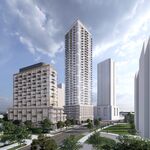SlickFranky
Active Member
I think it's important to note that construction cost is hardly the TTC's sole, or even their primary, concern. They have a set amount of funds to spend on upgrades, so obviously they want to try and cover as much ground as possible, hitting as many trouble-spots as possible, and generally getting the most bang-for-the-buck they can. But the primary thing the TTC cares about is the ongoing operation of the system, with particular focus on the operating costs. They're interested in reducing/limiting costs from labour, maintenance, fuel, etc. All of this needs to be taken into account.
compare cost of:
-running 40 buses an hour vs. running 20 LRVs
-maintaining asphalt ROW vs surface rail ROW vs tunnel
-ridership growth costs and limitations
-diesel cost increase vs electrical rate increase
It's not as simple as $2.4B vs $0.9B vs $0.4B, especially when that's not even the part that the TTC or the city are on the hook for. Ironically, this is the part that Ford should be most interested in as well, and yet he's pushing for subways....but that's a subject better suited to another thread.
compare cost of:
-running 40 buses an hour vs. running 20 LRVs
-maintaining asphalt ROW vs surface rail ROW vs tunnel
-ridership growth costs and limitations
-diesel cost increase vs electrical rate increase
It's not as simple as $2.4B vs $0.9B vs $0.4B, especially when that's not even the part that the TTC or the city are on the hook for. Ironically, this is the part that Ford should be most interested in as well, and yet he's pushing for subways....but that's a subject better suited to another thread.




